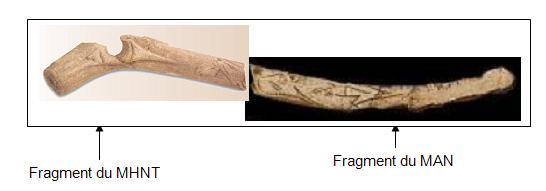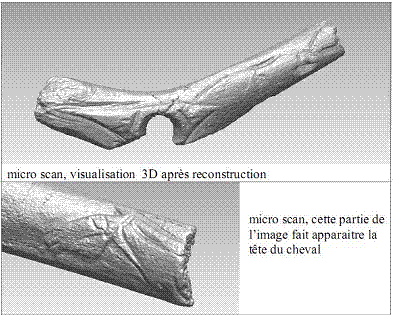
CNRS - ST2I
Outils d'Exploration et de Navigation Tridimensionnels
pour l'Archéologie et la Paléontologie
Mis à jour le 31/3/2009



 CNRS - ST2I |
Projet Exploratoire Pluridisciplinaire ODENT : Outils d'Exploration et de Navigation Tridimensionnels pour l'Archéologie et la Paléontologie Mis à jour le 31/3/2009 |

|
|

|

|
| Présentation | Réseau | Recherches | Publications | Ressources | Contact |
Data provided by by the Museum of Toulouse (http://www.museum.toulouse.fr/) and the ODENT Project supported by the ST2I Dept. of CNRS (http://www.lirmm.fr/ODENT/). Special Thanks to Dr. F.Dedouit, Dr. M. Faruch and all the radiological staff of the Radiology Department (head: Pr. H. Rousseau) of the Rangueil Hospital, Toulouse, France.
All data (3D mesh or 3D image) are watermarked et therefore can be tracked.
Data can be used on a free basis but only for scientific or teaching purposes. In no case, they can be used for commercial goals.
Any use of data (e.g., scientific paper or presentation, Web site, etc.) must display:
This paleolithic artefact, called a "bâton percé" (i.e. "perforated stick") was found in the site of La Madeleine. It consists of a decorated cylinder of antler with a hole through the thickest part. The baton is decorated with intricate carving. Its function is unknown, although it is generally interpreted as a shaft-straightener, from the use-wear in and around the hole. The age of this bâton percé is estimated to around 18,000 years BC. It was broken into two parts: one is in the collection of the Musée d'Archéologie Nationale de Saint Germain en Laye (France) and the other belongs to the Museum of Toulouse (France). This second piece was CT-scanned.
The 3D image acquisition was performed on a Siemens Sensation 16 Multi Slice Computed Tomography in the Radiology Department of the Rangueil Hospital, Toulouse, France.
The extraction of the bone surface mesh was performed according to the protocol described in the tutorial with the following parameters:
Some research work using 3D data of "bâton percé":

